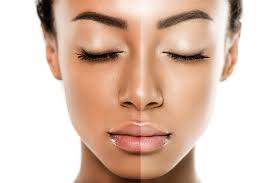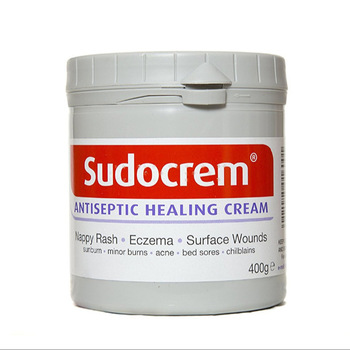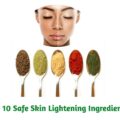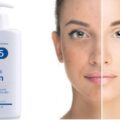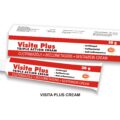Skin lightening, or skin bleaching, is a cosmetic procedure that aims to lighten dark areas of skin or achieve a generally paler skin tone. It’s usually used to improve the appearance of blemishes such as birthmarks and dark patches (melasma).
Skin lightening products work by reducing a pigment called melanin in the skin. Most people who use lighteners do so to treat skin problems such as age spots, acne scars, or discoloration related to hormones. It is also a technique used to lighten naturally dark skin.
What is Sudocrem?
Sudocrem is a medicated diaper rash cream, popular in countries like the United Kingdom and Ireland but not sold in the United States. Its key ingredients include zinc oxide, lanolin, and benzyl alcohol. The main use of Sudocrem is for the treatment of babies’ diaper rash. But research has shown it may help treat other conditions. Here, we’ll look at different ways people use Sudocrem and whether it’s effective.
Does Sudocrem Lighten Skin?
Sudocrem does not lighten skin but studies have shown that it can be effective in the treatment of acne spots because of the zinc oxide and benzyl alcohol it contains. Zinc is an important nutrient your body needs to fight infection and inflammation. While zinc is great to consume in foods that you eat, there is no evidence that topical zinc will reduce the inflammation associated with any types of acne. A 2014 review showed topical anti-acne creams were more effective if they contained zinc. The nutrient was found to be either equal or superior to erythromycin, tetracycline, or clindamycin when used alone in reducing the severity of acne. However, acne was not controlled by topical zinc alone.
Another effective use of Sudocrem is the treatment of minor cuts, scrapes, and burns. Because it acts as a protective barrier, it prevents infection by blocking bacteria from entering a wound. A 2018 review found that zinc can help speed up healing times for wounds. Another benefit to Sudocrem for wound treatment is that benzyl alcohol can act as a pain reliever.
Special warnings and precautions for use
Sudocrem is for external use only and should not be allowed to come into contact with the eyes and the mucous membranes. When using this product do not smoke or go near naked flames – risk of severe burns. Fabric (clothing, bedding, dressings etc) that has been in contact with this product burns more easily and is a serious fire hazard. Washing clothing and bedding may reduce product build-up but not totally remove it.
Sodium benzoate may cause local irritation and may increase jaundice (yellowing of the skin and eyes) in newborn babies (up to 4 weeks old). Side effects can also include local hypersensitivity occasionally.
What Skin Lightening Ingredients are Safe to Use?
Many skin lightening products contain dangerous ingredients which can cause severe harm and damage to your body. Nevertheless, there are many safe skin lightening ingredients you can try they include;
- Kojic Acid
Usually made as a by-product of malted rice – that’s used to make sake/rice wine, Kojic acid is an all-natural lightening and brightening skincare active. Kojic acid works to lighten and brighten your skin by making an enzyme necessary for melanin production unavailable i.e. the pigment which colors your skin.
- Vitamin C
Vitamin C is a much loved, multi-tasking skincare ingredient. Vitamin C is a necessary skincare antioxidant. Since your skin naturally makes vitamin C, it is therefore one of the safest skincare actives you could use.
- Alpha-arbutin
Another natural skin lightening active. Alpha-arbutin is made by Mother Nature and found in the leaves of the bearberry plant. Used in skincare at a 1 to 2% concentration, alpha-arbutin can rival even the most effective skin brighteners. Similarly, to Kojic acid, alpha-arbutin works by inhibiting skin’s tyrosinase enzymes.
- Niacinamide
Enter the world of skincare and you won’t travel far before hearing about the wondrous activity of niacinamide. Also known as pro-vitamin B3, niacinamide is an antioxidant, sebum (oil) balancer, acne fighter, anti-inflammatory, ceramide booster and… a very effective skin lightening active. Niacinamide works even more effectively when paired with N-acetyl glucosamine.
- Glutathione
A potent antioxidant that can even be taken as a food supplement. Glutathione makes a fantastic partner to well-studied skin lightening ingredients like Kojic acid. While studies show glutathione is safe for use on skin, not so much is known about how well or how quickly glutathione can lighten skin. For this reason, be sure your choice of lightening skincare includes glutathione accompanied by one of the other skin lightening ingredients on this list.
- Azelaic acid
Don’t let acid scare you, azelaic acid is the same pH level as your skin, 5.5pH which is also slightly acidic. Azelaic acid is most commonly known for its abilities to help calm rosacea – a chronic redness accompanied by irritation and scaling. However, azelaic acid is also an effective skin lightening ingredient. Used in skincare, azelaic acid will not only help even your skin tone, it will also help keep your skin clear.
- Glycolic acid
Most people know glycolic acid works as a leave on exfoliant, most people don’t know glycolic acid can also help lighten skin. While many of the ingredients on this list work to inhibit melanin synthesis, glycolic acid works to lighten skin by removing melanin pigment faster. Glycolic acid skincare speeds up the natural turn-over of your skin cells aka the rate at which they exfoliate. Uneven exfoliation can cause an uneven skin tone, therefore glycolic acid can powerfully boost the results of direct acting skin lighteners like Kojic acid.
- Linoleic acid
While you might not have heard about linoleic acid, you’ll have surely heard about natural plant oils which contain linoleic acid – rosehip oil, grapeseed oil and evening primrose oil. Linoleic acid can help speed up your skin cell turnover in the same way as glycolic acid with recent studies suggesting linoleic acid can also directly suppress melanin production. Another natural skincare active with noteworthy lightening and brightening abilities.
- Paper Mulberry
Mulberry extract is an up and coming skin lightening active. Sources boast mulberry extract may even have better efficacy than the very controversial Hydroquinone. Named a superoxide scavenger, paper mulberry extract can also help protect skin against damaging free radicals i.e. pollution induced age spots.
- Liquorice extract
As a mixture of actives, liquorice extract contains many ingredients with skin lightening benefits. Some of these work traditionally by inhibiting tyrosinase activity whereas others also lighten skin but by other mechanisms. This make liquorice extract an attractive and very effective skincare ingredient for lightening and brightening. READ: Is Nivea Cream For Light Skin Good For You?


